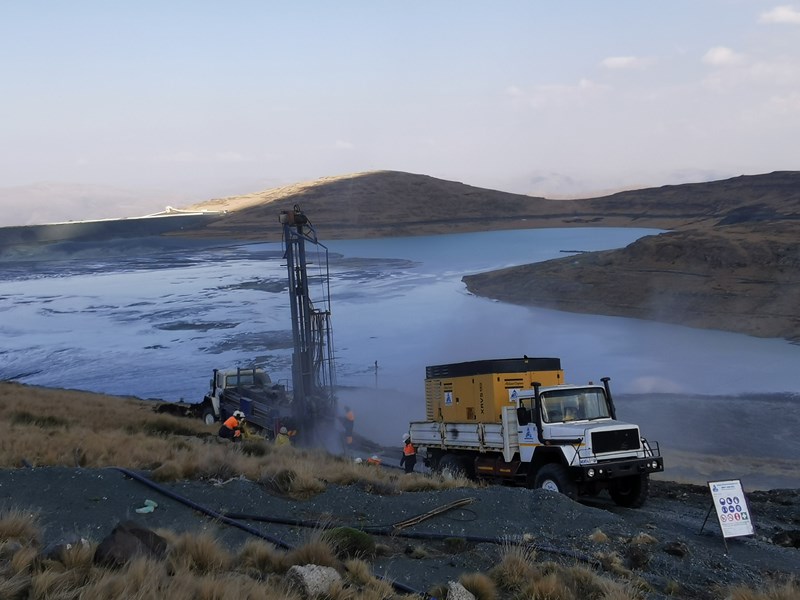Reverse Circulation Drilling | Letšeng Diamond Mine

“The Geomechanics drill team drilled 3 354 meters using the Reverse Circulation drill method.”
What is Reverse Circulation Drilling? Reverse Circulation drilling, or RC drilling, is a specific method of drilling which makes use of dual wall drill rods. These drill rods are a combination of an outer drill rod and an inner tube. With RC drilling, the rock is fragmented into chips by use of a piston that delivers rapid impacts to the stem of the hammer. This causes the rock to fragment which is then extracted through to the surface via the hollow inner tubes at a steady and continuous flow.
The Geomechanics team were required to carry out reverse circulation drilling at various locations on the Letšeng Diamond mine in Lesotho.
We successfully carried out and completed 27 ahead of face drilling boreholes at a total of 2 354 meters. These holes were drilled on benches that will be actively mined within a 3 years' business cycle period. We were to ensure that all drill chips are collected and sampled every 1 meter and that holes are flushed sufficiently to minimise contamination from one sample interval to the next. It was necessary to use a collection cyclone method to obtain the cleanest possible sample per meter.
Furthermore, RC drilling was completed on 6 environmental monitoring holes totalling 600 meters. The holes needed to be thoroughly flushed out to remove the loose cuttings and materials to allow for holes to be monitored continuously throughout the life of the mine. Lastly, the team had to use RC drilling at 1 hydrogeological borehole totalling 200 meters.
All the holes had PVC casing installed in each borehole with a perforated casing at the bottom of the hole and whenever water strike was encountered downhole. The team had to install standpipe piezometers to monitor groundwater levels. 3 Additional Vibrating Wire Piezometers and data loggers were also installed in the hydrogeology borehole to remotely measure pore pressure.
Since our Geomechanics team had to drill at an elevation of 3 100 meters above sea level, this meant that we had to be equipped with suitable clothing and equipment as anything can happen. In Lesotho, the weather can change from being hot and sunny to freezing temperatures within a matter of minutes. This meant that the team had to go well prepared as the location of the site was very remote. Despite the weather conditions, the team was able to work through it all and provide the client with accurate and quality samples.
The project started on the 24th of February 2020 and ended on the 29th of October 2020. Drilling would have finished sooner were the team not forced to return to South Africa due to the nationwide “hard-lockdown”.
Geomechanics site supervisor, Dean Macdonald, and the rest of the Geomechanics team members were able to successfully complete all the drilling at the various locations required with zero injuries to report. All thanks to the GeoGroup and the Letšeng Diamond Mine’s strict safety protocols and vigilant employees.
Plot 28 Central Road
Sunrella, Lanseria
Gauteng
South Africa
Tel. +27 (0)11 966 7760
Fax. +27 (0)86 663 3896
Email. info@geogroup.co.za